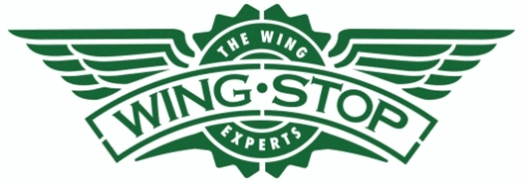WINGSTOP INC.
5501 LBJ Freeway, 5th Floor Dallas, TX 75240
WINGSTOP.COM | @WINGSTOP
Main: 972.686.6500
Fax: 972.686.6502
December 6, 2019
VIA EDGAR
James Giugliano
Securities and Exchange Commission
Division of Corporation Finance
100 F Street, N.E.
Washington, DC 20549
Re: Wingstop Inc.
Form 10-K for the Fiscal Year Ended December 29, 2018
Filed February 27, 2019
File No. 001-37425
Dear Mr. Giugliano:
We are writing in response to comments from the staff (the “Staff”) of the Securities and Exchange Commission (the “Commission”) contained in the letter dated November 26, 2019 regarding the Annual Report on Form 10-K of Wingstop Inc. (the “Company,” “we,” “our,” or “us”) for the fiscal year ended December 29, 2018, filed with the Commission on February 27, 2019 (the “Form 10-K”). We have repeated the Staff’s comments below in bold, followed by our response.
Form 10-K for the Fiscal Year Ended December 29, 2018
Consolidated Financial Statements
Consolidated Statements of Stockholders’ Deficit, page F-5
| |
| 1. | In both fiscal years 2017 and 2018 you present a line item “Issuance of common stock, net” in which the amount recognized at par value is offset by an equal amount within additional paid-in capital, with no net impact on total stockholders’ deficit. Please tell us the nature of these transactions and your basis for their accounting. |
Response: The transactions represented in the line item “Issuance of common stock, net” on our Consolidated Statements of Stockholders’ Deficit are composed of common stock issuances related to restricted stock awards (RSAs) granted to directors and restricted stock units (RSUs) granted to certain employees. Upon issuance of an RSA, the Company records the issuance of a share of common stock at par value and records the stock-based compensation over the vesting period based on the fair value of the award. The Company has issued fewer than 12,000 RSAs in each of the last three fiscal years. The Company also records share-based compensation for RSUs based on the fair value of the awards by debiting Stock-based compensation expense and crediting Additional paid-in capital (“APIC”) over the vesting period. Upon final vesting of the RSUs and issuance of the underlying common stock, we reclassify the par value from APIC to common stock, which is reported on the Consolidated Statement of Stockholders’ Deficit as “Issuance of common stock, net.”
Note 1 – Basis of Presentation and Summary of Significant Accounting Policies
(k) Revenue Recognition, page F-9
| |
| 2. | Please tell us and disclose how you account for breakage associated with gift cards and, if material, disclose the amount recognized in each period. Refer to ASC 606-10-55-46 through 55-49. |
Response: We account for all Wingstop gift cards sold in company-owned restaurants, which represent less than 5% of all locations, and in third party retail outlets. The Company's gift card liability for gift cards sold in company-owned restaurants is less than and has not exceeded $250,000. The Company has not recorded any breakage related to such gift cards because the amount of such breakage is immaterial. Breakage related to gift cards sold in third party retail outlets is estimated based on historical redemptions and is periodically recognized in proportion to customer redemptions. Breakage related to these cards was less than $400,000 in fiscal year 2018 and is not considered to be material to any period.
We will continue to monitor gift card redemption and breakage patterns and will disclose the accounting for breakage in future filings should the amounts involved ever become material.
(m) Advertising Expenses, page F-9
| |
| 3. | Please tell us and disclose in a footnote your timing for expensing advertising costs. Refer to Sections 25 and 50 of ASC Subtopic 720-35. |
Response: Our franchise agreements with our franchisees require that they contribute a certain percentage of their gross sales to the Wingstop Restaurants Advertising Fund (the “Ad Fund”), which amounts are reported under Advertising fees and related income. Advertising expenses, as reported on the Consolidated Statements of Operations, consists of advertising expenses incurred by the Ad Fund. The Company expenses the production costs of advertising in the period in which the advertising first occurs. All other advertising and promotional costs are expensed in the period incurred. Because we have a contractual obligation to spend revenues generated by the Ad Fund on advertising costs, we have applied the guidance for cooperative advertising in ASC-35-25-1A by analogy. Accordingly, when revenues of the Ad Fund exceed the related advertising expenses, advertising costs are accrued up to the amount of the related revenues.
In future filings, we will include the following explanatory language in Note 1 to our financial statements:
The Company expenses the production costs of advertising in the period in which the advertising first occurs. All other advertising and promotional costs are expensed in the period incurred. When revenues of the Ad Fund exceed the related advertising expenses, advertising costs are accrued up to the amount of the related revenues.
Should the Staff have additional questions or comments concerning the foregoing, please contact me at (972) 686-6500.
Very truly yours,
/s/ Michael J. Skipworth
Michael J. Skipworth
Chief Financial Officer
cc: Rufus Decker, Securities and Exchange Commission
Charles R. Morrison, Wingstop Inc.
Rebecca M. Minor, Esq., Wingstop Inc.
Greg R. Samuel, Esq., Haynes and Boone LLP
